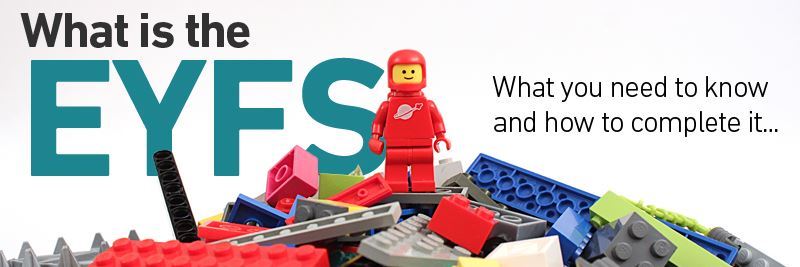The Early Years Foundation Stage (EYFS) is the framework published in 2012 by the Department for Education, that sets the standard for the development, learning and care of children from birth to five.
In this blog we’ll cover:
- What the EYFS is
- When it should be completed, and by whom
- How to fill in the EYFS form
- Who should receive the EYFS form
Feel free to scroll down to whichever part is relevant to you!
If you work in a nursery, pre-school or work with children under 5, you’ve probably come across the EYFS. This framework requires that people who work with children create a profile on them in the summer term of the academic year when a child reaches 5 years old. This profile summarises the children’s attainment at the end of the early years foundation stage. At two years old, only a short written summary is required.
The EYFS Profile
The EYFS profile is based on ongoing observations of the 17 early learning goals and the 3 characteristics of effective learning.
The 17 Early learning goals:
- Listening and Attention
- Understanding
- Speaking
- Moving and Handling
- Health and self care
- Self-confidence and self awareness
- Managing feelings and behaviour
- Making relationships
- Literacy: reading
- Literacy: writing
- Mathematics: numbers
- Mathematics: shape, space and measures
- People and communities
- The world
- Technology
- Exploring and using media and materials
- Being imaginative
The 3 characteristics of effective learning:
- Prime Areas of Learning:
- Communication and language
- Physical development
- Personal, social and emotional development
- Specific Areas of Learning:
- Literacy
- Mathematics
- Understanding the world
- Expressive arts and design
- Characteristics of Effective Learning:
- Playing and exploring
- Active learning
- Creating and thinking critically
Assessments of children are based primarily on observations of daily activities, and requires that the carers keep a note of the learning capabilities a child demonstrates in a range of contexts. A complete EYFS profile should include a short commentary on the children’s skills and ability in relation to the three characteristics of effective learning, mentioned above.
When should the EYFS profile be completed, and by whom?
The EYFS form should be completed by provider where the child spends the majority of their time between 8am and 6pm.
At two:
“The Early Years Foundation Stage (EYFS) requires that parents and carers must be supplied with a short written summary of their child’s development in the three prime learning and development areas of the EYFS: Personal, Social and Emotional Development; Physical Development; and Communication and Language; when the child is aged between 24-36 months.” Source
At five:
“The EYFS profile should be completed during the summer term of the academic year in which a child reaches age 5 unless:
- the Secretary of State for Education has granted an exemption from the profile for the setting or an individual child
- the child is continuing in EYFS provision beyond the year in which they turn 5
- the child arrives from abroad within 2 weeks of the LA data submission date so a practitioner can’t complete an accurate and valid assessment
- the child has spent a lengthy period of time away from the setting, for example, due to illness or medical treatment” Source
How to fill out the EYFS profile
When you fill out the EYFS profile, you must take into account evidence from a range of sources, not from watching the child for an hour or two.
For each of the 17 early learning goals (ELG) mentioned above, you must judge whether a child is:
- Expected (Meeting the level of development expected at that stage)
- Exceeding (Above the level expected of them)
- Emerging (Not yet at their expected level)
The profile should then include a brief commentary on the child’s skills and abilities in relation to the 3 characteristics of effective learning (mentioned above)
Here is sample document of a completed EYFS profile provided by Northamptonshire Council.
Who should receive the EYFS profile assessment?
Parents and carers should receive:
- A written summary of their child’s attainment, against the 17 ELGs
- A short commentary of how their child fares against the 3 characteristics of effective learning
Year 1 teachers should receive:
- A copy of the child’s EYFS profile
- A short commentary on how the child fares against the 3 characteristics of effective learning
The local authority should receive:
- The EYFS profile data upon request


